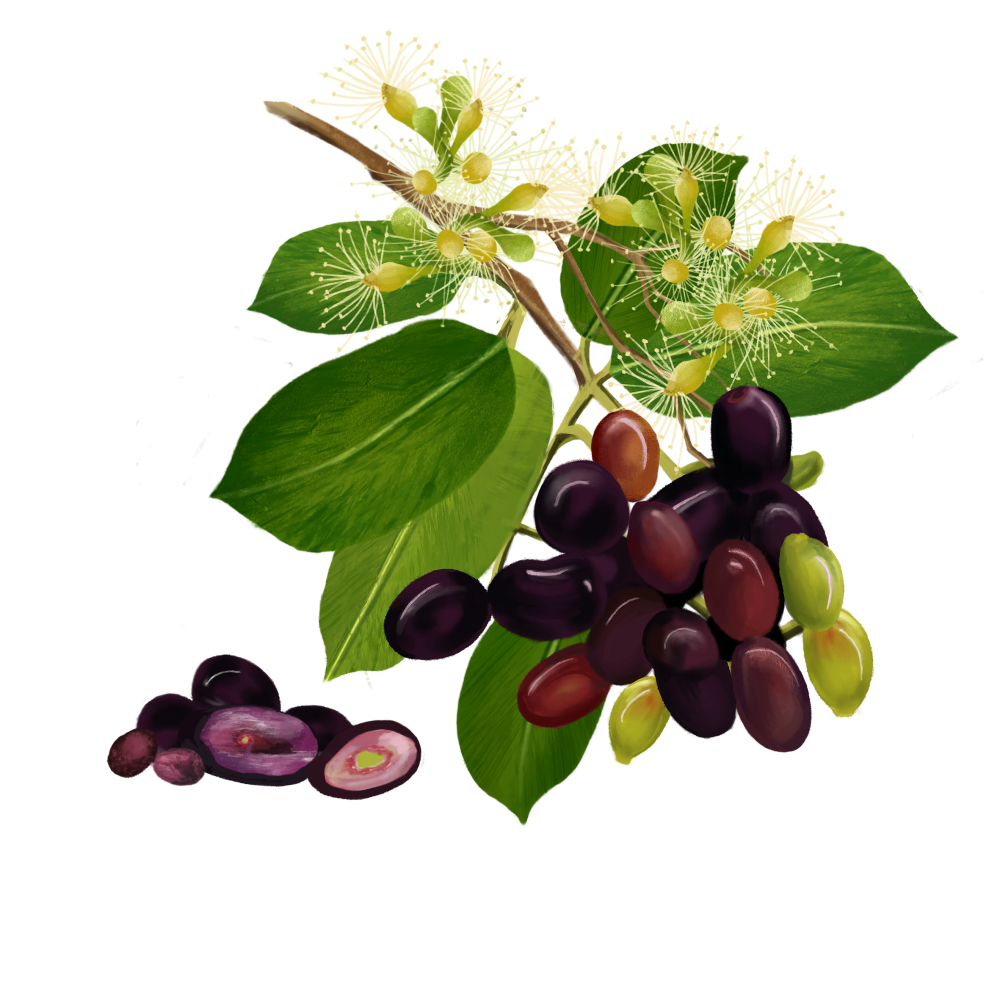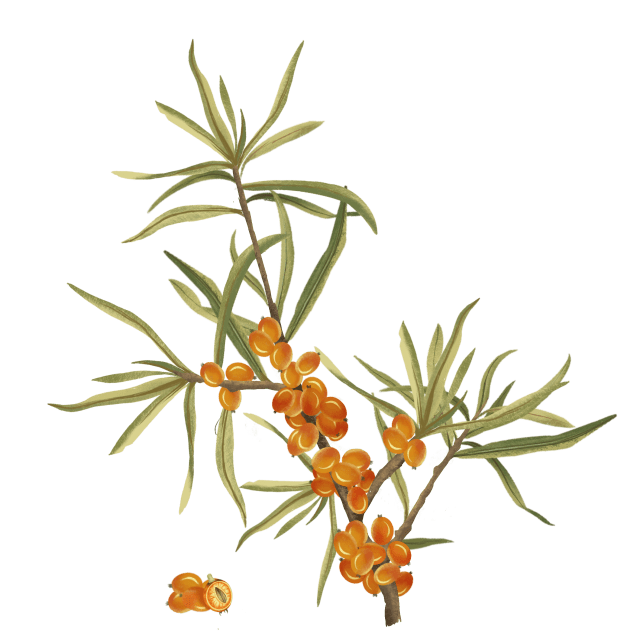Jamun

Latin name: Syzygium cumini
Other names: black plum, jambolana, Malabar plum, Java plum, Indian blackberry
Uses: fruit, juice, preserves
Ancient Indian texts sometimes refer to the subcontinent as Jambudvipa, or jamun island – a testament to the region’s centuries-long association with this deep violet-hued fruit from the myrtle family. Spreading its sweet fragrance thick in the air, this evergreen tropical tree flowers in February and March, then bears fruit from May to July. Its defining feature is the purplish stain the astringent fruit leaves on tongues, hands, and clothes (it can even be used as a dye). For those lucky enough to grow up with jamun, its color is the tint of childhood summer memories.
Why is jamun healthy?
Jamun is highly valued in Ayurveda and Unani medicine systems for its therapeutic properties. The fruit packs in powerful bioactive polyphenolic compounds and flavonoids, antioxidants, carotenoids, vitamins A and C, and folic acid. Studies suggest that both the pulp and the seed possess antibacterial, anti-diarrheal, anti-HIV, and anti-cancer properties. It can help in managing Type 2 diabetes and treating ulcers.
What does jamun taste like?
Don’t let jamun’s blackish skin and olive-like appearance fool you. Jamun is a juicy riot of flavor and texture. With tart top notes and an underlying sweetness that deepens with ripening, this succulent drupe is astringent by nature, which adds to a memorable finish.
Where does jamun grow?
Indigenous to the Indian subcontinent and neighboring parts of Southeast Asia, this hardy tree is now found in tropical zones around the world. It is considered invasive in some of these regions, including in Florida where it was introduced as a fruit tree in the early 20th century.
How do I prepare jamun and what do I pair it with?
Best eaten fresh, ripe, and in season, the most popular way to consume jamun in India is with a sprinkle of black salt and chaat masala for a joyfully mouth-puckering experience. In Cambodia it is mixed with salt, sugar, and chile powder for a similar effect. The fruit looks gorgeous in salads and dressings, is a fragrant addition to soups, and a color bomb in yogurt-based recipes. Try it in compotes, panna cotta, or a tea cake. Turn overripe fruit into juice, squash, jam, or ice cream. Underripe fruit can be used to make vinegar or wine, infuse spirits such as gin, and adds a distinct hue and flavor to cocktails. Even the seeds can be washed, sun-dried, and ground to make a powder and eaten by diabetics, first thing in the morning, as per Ayurveda.
Surprising fact:
Thought of as “the fruit of the Gods,” Jamun holds a place of pride in Indian mythology, including in the epic Ramayana, which describes the banished king Rama and his wife Sita eating jamun during their forest exile.




